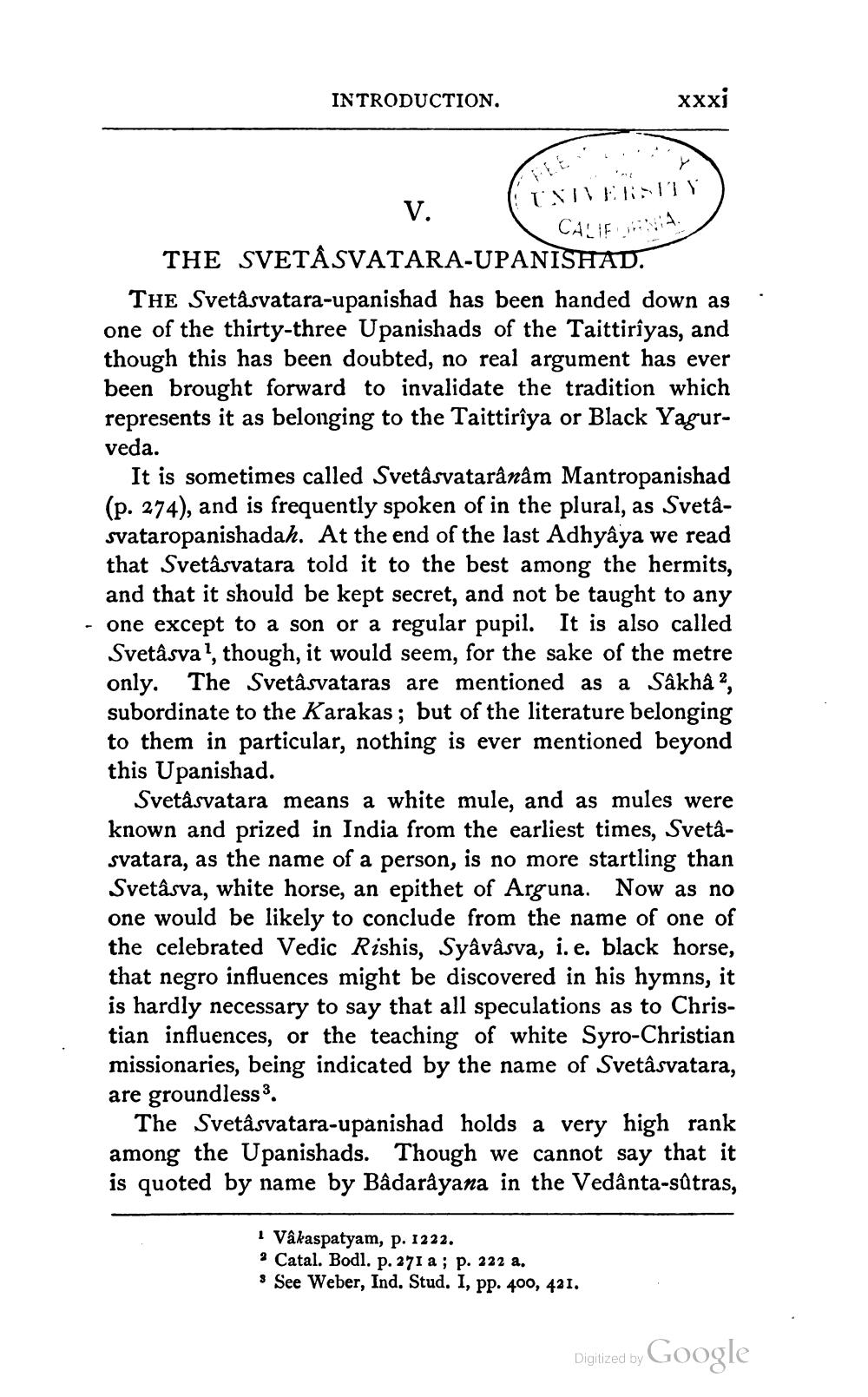________________
INTRODUCTION.
UNIVERSITY
CALIFORNIA
xxxi
V.
THE SVETASVATARA-UPANISHAD.
THE Svetasvatara-upanishad has been handed down as one of the thirty-three Upanishads of the Taittirîyas, and though this has been doubted, no real argument has ever been brought forward to invalidate the tradition which represents it as belonging to the Taittirîya or Black Yagurveda.
It is sometimes called Svetâsvatarânâm Mantropanishad (p. 274), and is frequently spoken of in the plural, as Svetâsvataropanishadah. At the end of the last Adhyâya we read that Svetâsvatara told it to the best among the hermits, and that it should be kept secret, and not be taught to any one except to a son or a regular pupil. It is also called Svetâsva1, though, it would seem, for the sake of the metre only. The Svetâsvataras are mentioned as a Sâkhâ2, subordinate to the Karakas; but of the literature belonging to them in particular, nothing is ever mentioned beyond this Upanishad.
Svetâsvatara means a white mule, and as mules were known and prized in India from the earliest times, Svetâsvatara, as the name of a person, is no more startling than Svetâsva, white horse, an epithet of Arguna. Now as no one would be likely to conclude from the name of one of the celebrated Vedic Rishis, Syâvâsva, i. e. black horse, that negro influences might be discovered in his hymns, it is hardly necessary to say that all speculations as to Christian influences, or the teaching of white Syro-Christian missionaries, being indicated by the name of Svetâsvatara, are groundless3.
The Svetâsvatara-upanishad holds a very high rank among the Upanishads. Though we cannot say that it is quoted by name by Bâdarâyana in the Vedanta-sûtras,
1 Vâkaspatyam, p. 1222.
2 Catal. Bodl. p. 271 a; p. 222 a.
See Weber, Ind. Stud. I, pp. 400, 421.
Digitized by
Google




